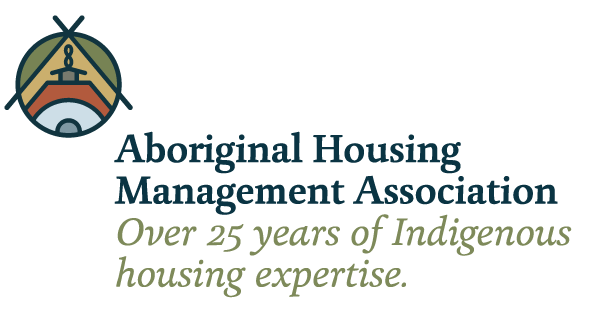
Indigenous Housing Needs Data Resource Library
AHMA has created this data resource library for municipalities to embed Indigenous housing needs in their Housing Needs Reports (HNRs). The library includes basic data points to begin to determine housing need and vulnerabilities with direct links to the data. We hope this will encourage municipalities to include Indigenous populations in their data collection.
For further information on how municipalities can support Indigenous community members with culturally safe and trauma-informed housing solutions, please click here.
Background
Indigenous community members continue to be widely overrepresented in homeless populations across BC, and face increased rates of eviction, and eviction into homelessness.1, 2 The 2023 Report on Homeless Counts in BC identified that 40% of those who reported experiencing homelessness identified as Indigenous, despite being only 6% of the Census population. This number has climbed to over 80% in some Northern communities. High rates of Indigenous homelessness are attributed to the lack of affordable, safe, and accessible housing and intergenerational trauma resulting from colonization, cultural genocide, and policies that actively sought to dismantle Indigenous culture, families and communities.3, 4, 5
Despite the clear unmet need for Indigenous housing, Housing Needs Reports (HNRs) often do not consider calculations for Indigenous housing needs. HNR data informs municipal plans, priorities and resource allocation, and has the potential to directly influence development priorities and outcomes. Without a basic consideration of Indigenous-specific housing needs, it will be impossible to bridge the growing gap in access to affordable, safe, and adequate housing. The data collection and evaluation mechanisms will have to change to better support Indigenous community members and move towards reconciliation.
Indigenous Housing Needs – Data Resources
Many of the definitions and mechanisms used to measure housing needs and homelessness consistently underestimate and understate the needs of Indigenous people. Determining the true number of affordable housing units needed for Indigenous people requires an understanding of the intersectional realities Indigenous people face. For example, housing insecurity is compounded for Indigenous women, girls, and gender-diverse peoples.6 Inequalities are even more pronounced for Indigenous people with disabilities or health conditions due to reduced access to employment, education, vocational training and disability-specific support.7
Meaningful collaboration with local First Nations and Indigenous-led organizations is crucial to understanding and addressing the needs in your region, and analyzing the data with a culturally appropriate lens.
Sources include:
Traditional territory/territories of your region:
Data Source: Native Land
Organizations providing off-reserve housing for Indigenous people in your region:
Data Source: Housing & Service Providers – Aboriginal Housing Management Association (ahma-bc.org) Data Source: Indigenous Housing Providers | BC Housing
Friendship Centers:
Data source: Home – BCAAFC
Indigenous Community
This section outlines a few key data points for beginning to understand the needs and vulnerabilities of Indigenous community members in your region.
Please note, the Census, by its nature, is only a snapshot in time and cannot tell the full story. Due to incomplete records, the Census undercounts the number of Indigenous people, especially those living on reserves or settlements. With those limitations in mind, the Census still provides a useful picture of the population-level landscape.
Data Sources:
Indigenous Population Profile – 2021 Census
Aboriginal Population Profile – 2016 Census
NHS Aboriginal Population Profile – 2011 Census
We recommend the following categories and comparing years to get a sense of changes over time:
Indigenous Population:
- Indigenous population totals (city/municipality) for 2011, 2016, and 2021
- First Nations, Métis, and Inuit population
- Living on reserve
- Living off reserve
Indigenous Households:
- Number of Indigenous households
- Change in number of Indigenous households between 2011, 2016, and 2021
Indigenous Household Size:
- Average Indigenous household size (city/municipality)
Median Age for Indigenous population:
Indigenous Age Grouping
- 0-14 years
- 15 – 24 years
- 25 – 34 years
- 35 – 44 years
- 45 – 54 years
- 55 – 64 years
- 65 and over
Median Household Income for Indigenous population (compare with median household income for total population)
Indigenous Housing Information
As a result of intergenerational trauma, combined with the legacy of colonization and myriad systemic barriers, Indigenous communities differ in some key housing indicators.
For example, there are fewer Indigenous homeowners compared to the non-Indigenous population province-wide. Indigenous people are also more likely to be renters and face adverse rental experiences. As renters, recent research shows that Indigenous people in BC face increased rates of eviction and eviction into homelessness than the non-Indigenous population.8 Additionally, many existing buildings supporting Indigenous people at affordable rents need significant repairs, and operating agreements are set to expire with no commitment to extending them. While investment in new units is desperately needed, preserving the existing housing stock is crucial.
The Dwelling/Household tab of the Indigenous Population Profile in the 2021 Census can help you locate the following key data indicators.
Data Sources:
Indigenous Population Profile – 2021 Census – Dwelling/Household tab
Aboriginal Population Profile, 2016 Census – Dwelling/Household tab
We recommend the following categories and comparing years to get a sense of changes over time:
Housing Tenure for Indigenous Households:
- Owner households
- Renter households
- Renter households in subsidized housing
Number of Bedrooms for Indigenous Households:
- 0 bedrooms
- 1 bedroom
- 2 bedrooms
- 3 bedroom
- 4 or more bedrooms
Housing Indicators:
- Indigenous Households below affordability standards (spending 30% or income on shelter)
- Indigenous Households below adequate standards (in dwellings requiring major repairs)
- Indigenous Households below suitability standards (in overcrowded dwellings)
- Indigenous households in core housing need (if a household falls below ONE of three indicators: housing adequacy, affordability or suitability, and would have to spend 30%)
Average Rents and Vacancy Rates in your Region:
As noted previously, Indigenous households are more likely to be renters. Understanding the average rents and vacancy rates are important to understanding the challenge Indigenous households face in finding a rental in your region. Indigenous people face numerous additional barriers as well, with frequent reports of racism, discrimination, and stigmatization in finding rental housing.
Data Source: CMHC Housing Market Information Portal
Note: This data is not available for all communities at the CSD level.
Percent of Indigenous Households in Core Housing Need and the Affordable Housing Deficit by Income Level and Household Size:
The Core Housing Need indicator helps identify what percentage of households are living in homes that are unaffordable and/or fall below acceptable housing standards. There are a few limitations in the calculation of this indicator. The income data in the 2021 Census used to calculate core housing need was for the 2020 calendar year when the federal government was distributing the Canada Emergency Response Benefit (CERB). This temporarily inflated incomes and resulted in artificially low core housing need numbers for 2021. Since 2021, BC has seen volatile economic circumstances, which have led to a dramatic increase in rents and expenses that need to be considered when trying to understand current Indigenous housing needs. Even with this undercount, the Census data still identifies a significant number of Indigenous households in core housing need: 17,985 households province-wide.
Note: This data is not available for all communities at the CSD level.
Data source: Housing Needs Assessment Tool | Housing Assessment Resource Project (HART) (ubc.ca)
See also: 2021 Affordable Housing Deficit for Indigenous Households by Income Level and Household Size:
Data source: Housing Needs Assessment Tool | Housing Assessment Resource Project (HART) (ubc.ca)
Homelessness
Indigenous people are consistently overrepresented in homeless populations, as measured by Point in Time (PiT Counts). PiT counts are intended to measure of the number of people experiencing homelessness on a specific day. The purpose of the count is to estimate the number of people experiencing homelessness, obtain a demographic profile of those people, and identify trends that can be comparable to previous counts that used a similar methodology.
The last PiT Counts took place in the spring of 2023 in 27 communities in B.C. Consistent with all Point in Time Counts to date in B.C., people who identify as Indigenous are overrepresented. It is important to consider the immediate unmet housing needs of these populations experiencing homelessness.
It is important to note that the PiT count methodology is limiting and results in an absolute minimum enumeration of people experiencing homelessness in a community. Those not accessing services or those in myriad precarious housing situations are underrepresented in PiT counts. It is also commonly understood that PiT counts typically undercount historically marginalized or underrepresented populations, including youth, seniors, Indigenous Peoples, those who have been historically marginalized due to race, members of the 2SLGBTQIA+ community, and persons with disabilities.
Data source: Point in Time Counts
We recommend a comparison of the last two PiT Counts to notice any changes and trends in the following categories:
- Number and % of Indigenous people experiencing homelessness
- Indigenous % of population compared to Census
- % of people who are unsheltered, and type (makeshift, someone else’s place, outside)
- % of people sheltered
- Gender breakdown
- 2SLGBTQIA+ representation
- Age breakdown
- Reasons for losing housing
- % of people with acquired brain injury and two or more health concerns
- Length of time experiencing homelessness
- Services accessed
- Overnight stay locations
- First United (2023). BC Eviction Mapping Interim Report, May 2023. https://firstunited.ca/how-we-help/bc-eviction-mapping/ ↩︎
- Xuereb, S., & Jones, C. 2023. Estimating No-Fault Evictions In Canada: Understanding BC’s Disproportionate Eviction Rate in the 2021 Canadian Housing Survey. Balanced Supply of Housing Research Partnership. ↩︎
- Thistle, Jesse. 2017. Definition of Indigenous Homelessness. Canadian Observatory on Homelessness. ↩︎
- MMIWG – National Inquiry into Missing and Murdered Indigenous Women and Girls. 2019. Reclaiming power and place: The final report of the national inquiry into missing and murdered Indigenous women and girls. Volume 1a. ↩︎
- Truth and Reconciliation Commission of Canada (2015). Truth and Reconciliation Commission of Canada: Calls to Action. Truth and Reconciliation Commission of Canada, Winnipeg, Manitoba. ↩︎
- Native Women’s Association of Canada (2020). Indigenous Housing: Policy and Engagement. Final Report to Indigenous Services Canada. See also Report of the Special Rapporteur on the Rights of Indigenous Peoples, 2023. ↩︎
- AHMA (2023). Exploring Inclusive Housing for Indigenous Peoples Living with Diverse Abilities: An Environmental Scan. Available on AHMAs website: Research & Data Reports – Aboriginal Housing Management Association (ahma-bc.org) ↩︎
- The five-year eviction rate is 10.4% for Indigenous renters compared to 6.2% for non-Indigenous renters. Xuereb, S., & Jones, C. 2023. Estimating No-Fault Evictions In Canada: Understanding BC’s Disproportionate Eviction Rate in the 2021 Canadian Housing Survey. Balanced Supply of Housing Research Partnership. ↩︎

